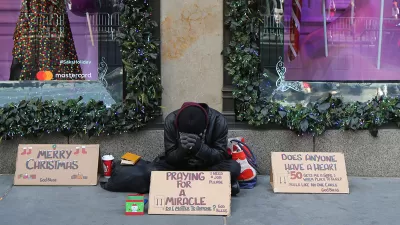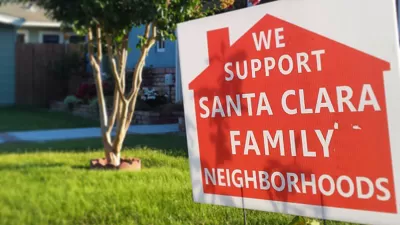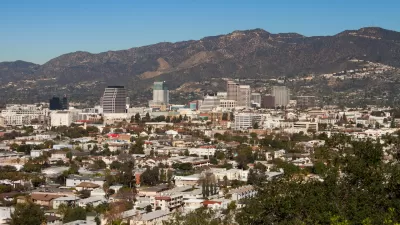Upzoning without addressing speculation and finance could exacerbate the housing crisis for the nation’s most vulnerable communities, a professor of urban planning warns.

Whether or not blanket upzoning policies, like California’s recently quashed SB 50, would address the state's housing affordability crisis is a question that's hotly contested and a debate that goes beyond the standard YIMBY vs. NIMBY narrative, according to Dr. Ananya Roy, professor of urban planning and founding director of the Institute on Inequality and Democracy at UCLA.
Dr. Roy studies how market forces and public policy combine to drive displacement and housing inequality in cities around the world. In an exclusive interview with The Planning Report, Roy discusses how failing to address the structural causes of housing precarity, including speculation by major financial actors, could exacerbate the housing crisis for the communities who are already most vulnerable to its impacts.
Lost between the YIMBY supply-side rhetoric and the NIMBY "neighborhood character" mantra is a critical look at how predatory financial practices lead to housing insecurity and homelessness in the first place, Roy says:
"At the risk of oversimplification, the story goes a bit like this: What we saw with the foreclosure crisis and the Great Recession was, of course, predatory lending by large banks. That predatory, deregulated lending led to a massive loss of wealth and homeownership for racial and ethnic minorities. There were whole cities and communities devastated by the vast reach of that crisis.
Those neighborhoods, as well as the neighborhoods we traditionally think of as the “inner city,” are now the sites of new forms of predatory financialization. Private equity firms such as Blackstone are buying up quite large amounts of property, including foreclosed single-family homes, and converting them into rental housing—and then, as research by scholars such as Desiree Fields shows, securitizing that housing and turning it into a speculative asset."
Without intentional efforts to curb these practices by regulating massive corporate landlords and enhancing tenant protections, Roy says, supply-side housing solutions like upzoning might ease the housing burden for the upper-middle class while making it far worse for low-income communities of color threatened by houselessness, eviction, and structural racism.
FULL STORY: UCLA's Ananya Roy on Housing Inequality & Market-Driven Displacement

Planetizen Federal Action Tracker
A weekly monitor of how Trump’s orders and actions are impacting planners and planning in America.

Map: Where Senate Republicans Want to Sell Your Public Lands
For public land advocates, the Senate Republicans’ proposal to sell millions of acres of public land in the West is “the biggest fight of their careers.”

Restaurant Patios Were a Pandemic Win — Why Were They so Hard to Keep?
Social distancing requirements and changes in travel patterns prompted cities to pilot new uses for street and sidewalk space. Then it got complicated.

Platform Pilsner: Vancouver Transit Agency Releases... a Beer?
TransLink will receive a portion of every sale of the four-pack.

Toronto Weighs Cheaper Transit, Parking Hikes for Major Events
Special event rates would take effect during large festivals, sports games and concerts to ‘discourage driving, manage congestion and free up space for transit.”

Berlin to Consider Car-Free Zone Larger Than Manhattan
The area bound by the 22-mile Ringbahn would still allow 12 uses of a private automobile per year per person, and several other exemptions.
Urban Design for Planners 1: Software Tools
This six-course series explores essential urban design concepts using open source software and equips planners with the tools they need to participate fully in the urban design process.
Planning for Universal Design
Learn the tools for implementing Universal Design in planning regulations.
Heyer Gruel & Associates PA
JM Goldson LLC
Custer County Colorado
City of Camden Redevelopment Agency
City of Astoria
Transportation Research & Education Center (TREC) at Portland State University
Camden Redevelopment Agency
City of Claremont
Municipality of Princeton (NJ)





























